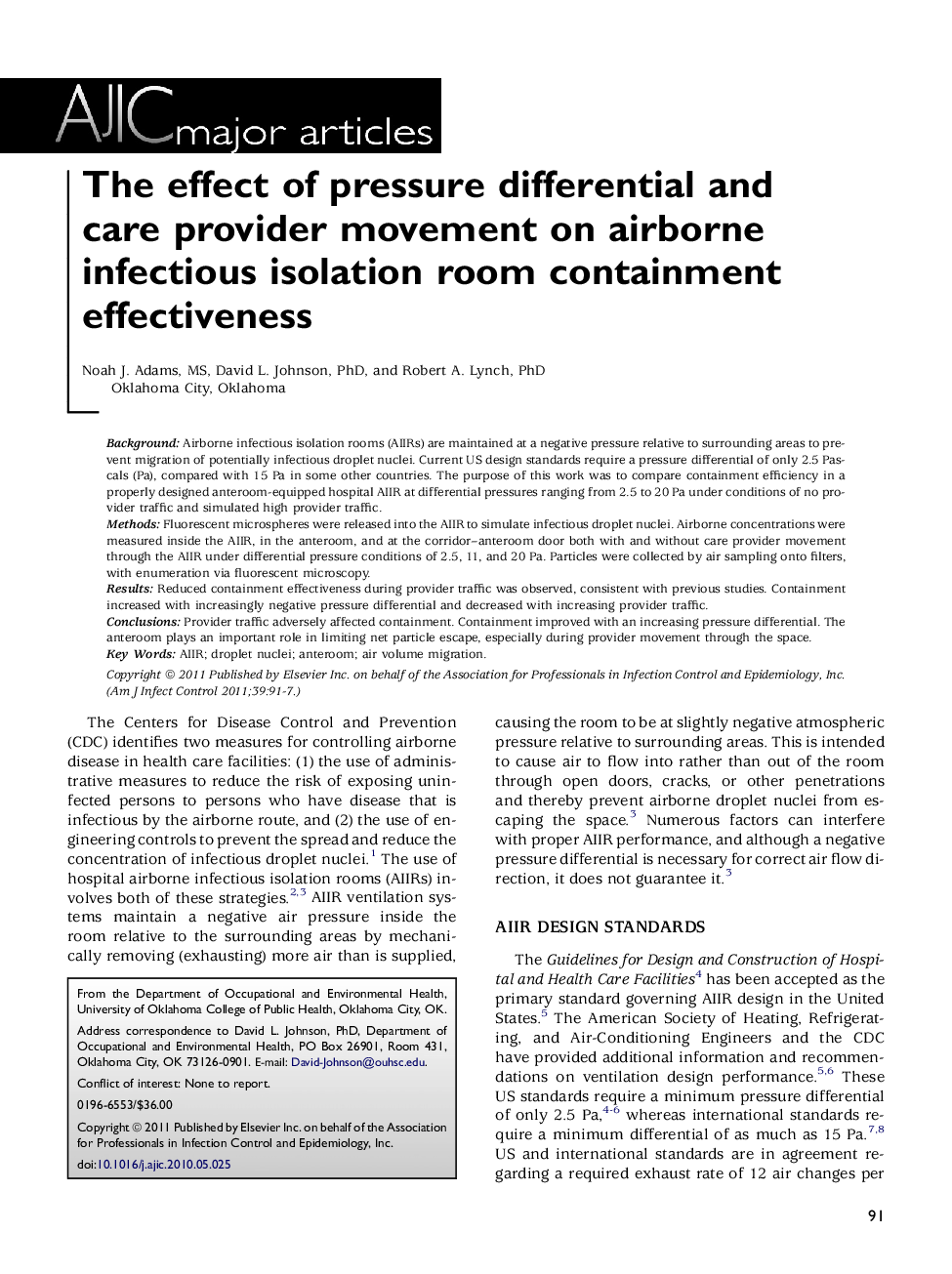| Article ID | Journal | Published Year | Pages | File Type |
|---|---|---|---|---|
| 2638347 | American Journal of Infection Control | 2011 | 7 Pages |
BackgroundAirborne infectious isolation rooms (AIIRs) are maintained at a negative pressure relative to surrounding areas to prevent migration of potentially infectious droplet nuclei. Current US design standards require a pressure differential of only 2.5 Pascals (Pa), compared with 15 Pa in some other countries. The purpose of this work was to compare containment efficiency in a properly designed anteroom-equipped hospital AIIR at differential pressures ranging from 2.5 to 20 Pa under conditions of no provider traffic and simulated high provider traffic.MethodsFluorescent microspheres were released into the AIIR to simulate infectious droplet nuclei. Airborne concentrations were measured inside the AIIR, in the anteroom, and at the corridor–anteroom door both with and without care provider movement through the AIIR under differential pressure conditions of 2.5, 11, and 20 Pa. Particles were collected by air sampling onto filters, with enumeration via fluorescent microscopy.ResultsReduced containment effectiveness during provider traffic was observed, consistent with previous studies. Containment increased with increasingly negative pressure differential and decreased with increasing provider traffic.ConclusionsProvider traffic adversely affected containment. Containment improved with an increasing pressure differential. The anteroom plays an important role in limiting net particle escape, especially during provider movement through the space.
